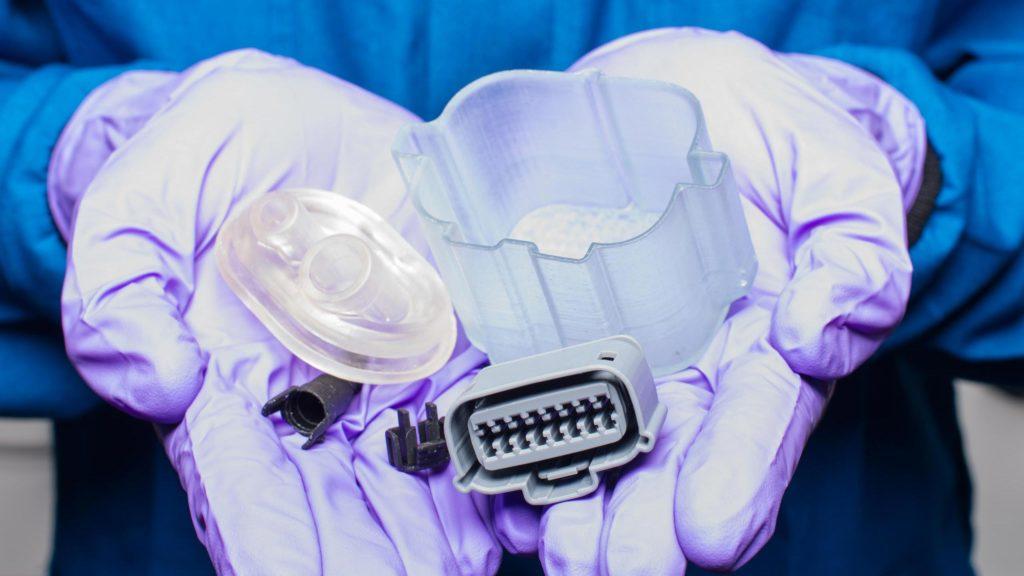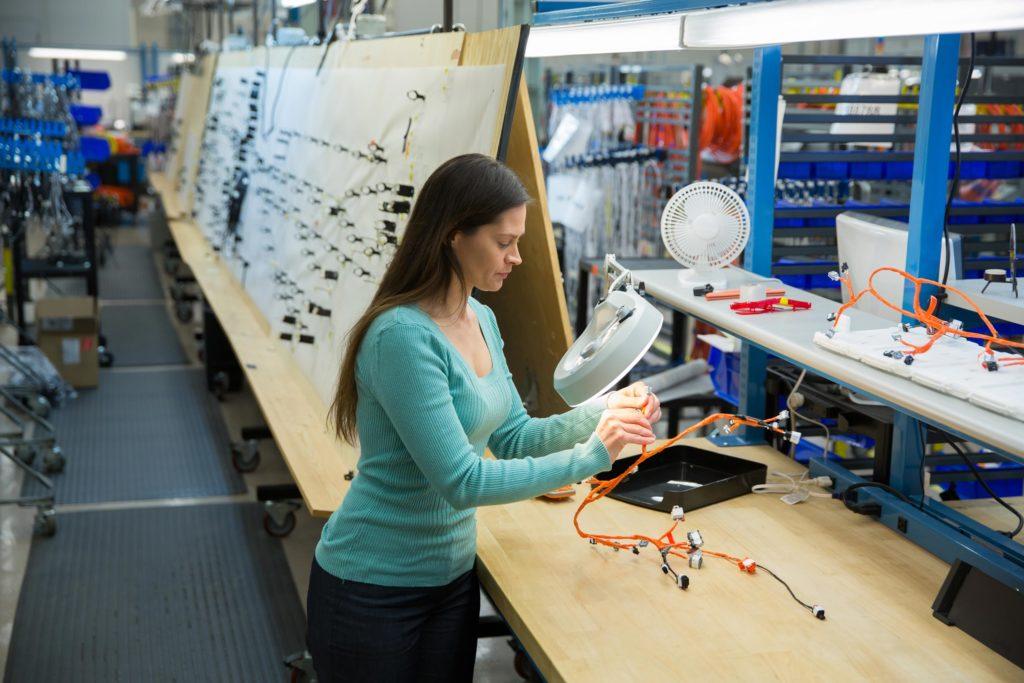Case Study: Carbon’s CLIP Technology Lives Up to the Hype for Automotive Manufacturer Delphi
 Unless you’ve been living under a 3D printed rock for the last year, you’re probably at least marginally acquainted with Carbon and their groundbreaking CLIP technology. For a while, it seemed as though the brand new, lightning fast 3D printing technology was all anyone was talking about, and companies have been tripping over each other in their eagerness to be among the first to try it out. As the hype begins to slowly die down, though, it’s time to start taking a look at how CLIP technology performs in real world settings, and automotive parts manufacturer Delphi was happy to oblige with a newly released case study.
Unless you’ve been living under a 3D printed rock for the last year, you’re probably at least marginally acquainted with Carbon and their groundbreaking CLIP technology. For a while, it seemed as though the brand new, lightning fast 3D printing technology was all anyone was talking about, and companies have been tripping over each other in their eagerness to be among the first to try it out. As the hype begins to slowly die down, though, it’s time to start taking a look at how CLIP technology performs in real world settings, and automotive parts manufacturer Delphi was happy to oblige with a newly released case study.
![]() Delphi is no stranger to additive manufacturing; in fact, they were one of the first companies to incorporate it into their manufacturing processes, so they’re a perfect subject for an early case study. While many manufacturing companies are still exclaiming over 3D printing in general, Delphi is familiar enough with the technology’s benefits and limitations to be able to clearly evaluate CLIP as compared to older additive manufacturing methods.
Delphi is no stranger to additive manufacturing; in fact, they were one of the first companies to incorporate it into their manufacturing processes, so they’re a perfect subject for an early case study. While many manufacturing companies are still exclaiming over 3D printing in general, Delphi is familiar enough with the technology’s benefits and limitations to be able to clearly evaluate CLIP as compared to older additive manufacturing methods.
Jerry Rhinehart, manager of additive manufacturing management at Delphi, leads a team dedicated to prototyping parts such as electrical connectors, grommets and housings. While additive manufacturing has greatly reduced the amount of time involved in prototyping, it still falls short as product development deadlines get tighter and tighter. With Carbon’s M1 printer, Rhinehart and his team have not only been able to churn out prototypes at a much faster rate, but they’ve been able to create functional prototypes and run part validation testing for the first time.
”We’re excited to expand our work with the M1 to functional prototyping – something we haven’t been able to do until now – and to explore new manufacturing opportunities as a whole,” said Rhinehart. “It’s all about the materials and mechanical properties that we can achieve with Carbon’s technology. Traditional materials only provided about 50 percent of the mechanical properties we need to produce functional and final parts. We’re currently using the M1 on a project to install a batch of connectors and other electrical components into a 25-car fleet this June for road and validation tests.”
 Those materials include Carbon’s proprietary elastomeric polyurethane (EPU), flexible polyurethane (FPU) and rigid polyurethane (RPU). In addition to speeding up the process overall, CLIP also allows for the additive manufacturing of complex parts that other 3D printing methods can’t manage. Take electrical connectors, for example. Their design includes an array of complicated details including primary and secondary locking mechanisms and engagement/disengagement retention forces. For all its capabilities, such a design is still too much for a regular 3D printer and its layer-by-layer fabrication method, which results in a part with uneven edges and inconsistent performance.
Those materials include Carbon’s proprietary elastomeric polyurethane (EPU), flexible polyurethane (FPU) and rigid polyurethane (RPU). In addition to speeding up the process overall, CLIP also allows for the additive manufacturing of complex parts that other 3D printing methods can’t manage. Take electrical connectors, for example. Their design includes an array of complicated details including primary and secondary locking mechanisms and engagement/disengagement retention forces. For all its capabilities, such a design is still too much for a regular 3D printer and its layer-by-layer fabrication method, which results in a part with uneven edges and inconsistent performance.
One of the appeals of CLIP technology is that it does away with layer-by-layer printing, resulting in smoother, stronger parts even of a more complex nature. Thus, Delphi can now use the M1 to print parts like electrical connectors, which they previously produced using injection molding. It can take 6-12 weeks to wait for a prototype injection molding tool to be created, not to mention the additional time required if the parts need any redesigns. CLIP opens up a wealth of opportunities for a company like Delphi; rather than being limited to mass production only, they can now look at small to medium volume production, which could open up entirely new markets.
Then there’s the holy grail for manufacturers: 3D printed end use parts, rather than just prototypes. While additive manufacturing has made prototyping much easier and faster, the technology has so far been mostly limited to just that – prototyping. Not so with CLIP, and Delphi is already exploring opportunities for additively manufactured end use parts.
“Engineers can start to re-design parts from the ground up without being constrained by the design rules associated with traditional manufacturing technologies,” said Rhinehart. “They can consider lighter weight parts using internal mesh structures, single assembly parts that will better address sealing needs and reduce overall complexity of product assembly, and ultimately decrease part and product failure modes because of this new design freedom.”
I expect we’ll be seeing a lot more case studies from Carbon as CLIP technology starts to be utilized with more regularity by manufacturers in all industries. If Delphi is any indication, the technology is certainly living up to the hype – which I don’t think will surprise anyone. Discuss further in the Carbon CLIP Technology Used in Delphi for 3D Printing forum over at 3DPB.com.
Subscribe to Our Email Newsletter
Stay up-to-date on all the latest news from the 3D printing industry and receive information and offers from third party vendors.
You May Also Like
3D Printing Is Key to the New Energy Space
While it’s difficult to observe from the standpoint of a subjective individual, human society is currently undergoing a fundamental transformation. Driven primarily by resource depletion and lack of deeper economic...
Siemens Increases Attention on US 3D Printing Landscape
Global industrial giant Siemens has announced that the company is taking steps to help bolster the US additive manufacturing (AM) industry. The efforts will surround Siemens’ Charlotte Advanced Technology Collaboration...
LEAP 71’s AI-Designed Rocket Engine Passes First Hot-Fire Test
Dubai tech-driven space innovator LEAP 71 successfully tested a 3D printed rocket engine designed entirely by an A.I. model called Noyron. This engine, made from copper, was designed autonomously without...
Immensa and Pelagus 3D Collaborate to Tap “$2 Billion” 3D Printing Opportunity
Dubai’s Immensa, which claims to be the “largest digital manufacturer” in the Middle East/North Africa (MENA) region, has formed a strategic collaboration with Pelagus 3D, a Singapore-based, on-demand digital manufacturing...


































